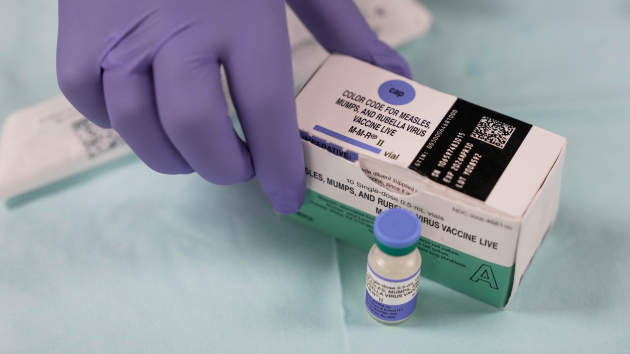Washington state experiencing first known outbreak of potentially deadly fungus: Health officials
Written by ABC Audio ALL RIGHTS RESERVED on February 1, 2024

(NEW YORK) — Washington state is experiencing its first known outbreak of a potentially deadly fungus, according to public health officials.
Four patients in the last month have tested positive for Candida auris, or C. auris, Public Health – Seattle & King County said in a release.
The first case occurred in a patient who had recently been admitted to Kindred Hospital Seattle, which was identified through a proactive screening program.
Additional screenings found two new cases, as well as a case with links to Kindred, who had originally tested negative for C. auris when first admitted, the health department said.
It’s currently unclear what the initial source of the infection is and officials said the investigation is ongoing.
A case of C. auris was identified in July in a patient who was transferred to Kindred from St. Joseph’s Hospital in Pierce County. It’s believed to be the first locally acquired case in Washington state, according to the department.
Health officials said they have been working with the hospital for many months “with the expectation that C. auris would eventually be found in Washington State.”
“Public Health continues to work together with Kindred to help limit spread,” the release said. “This includes keeping patients who test positive for C. auris away from other patients to reduce risk of spread and using specific disinfecting cleaning products effective for C. auris.”
The health department said the hospital is also notifying facilities that received Kindred patients and advising that they screen for the fungus.
Kindred did not immediately reply to ABC News’ request for comment.
C. auris Is a type of yeast that can lead to serious illnesses and spreads easily among patients in health care facilities, according to the Centers for Disease Control and Prevention (CDC).
It’s a relatively new type of fungus, first identified in Japan in 2009, according to the CDC. However, studies conducted since then have found samples of C. auris can be dated back to South Korea in 1996.
C. auris can spread either from person-to-person transmission or by people coming into contact with contaminated surfaces.
Most healthy people do not need to worry about C. auris infections, according to the CDC.
However, those with weakened immune systems or who are immunocompromised, are at risk of hard-to-treat infections as well as elderly patients or hospital patients who have had lines or tubes in their body.
There are strains of C. auris that are drug-resistant, meaning infections caused by the yeast will not respond to multiple antifungal drugs commonly used to treat Candida infections.
Despite this, there is a class of antifungal drugs called echinocandins that can be used and are given intravenously. Echinocandins prevent a key enzyme needed to maintain the cell wall of the fungus, according to the National Institutes of Health. In some cases, multiple high doses may be required, according to the CDC.
More than one in three patients with invasive C. auris infection, meaning it affects the blood, heart, or brain, die, according to the CDC.
To prevent spread, the CDC recommends family members and close contacts of C. auris patients properly sanitize their hands. Health care personnel and laboratory staff are reminded to do the same as well as disinfect a patient room and report cases quickly to public health departments.
Copyright © 2024, ABC Audio. All rights reserved.
 KVSP
KVSP 




